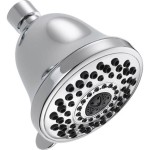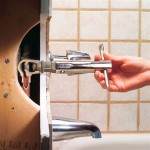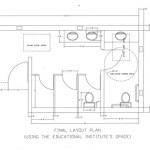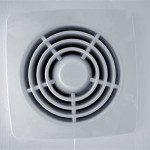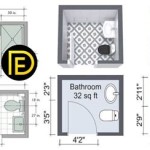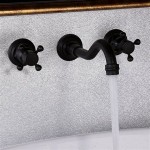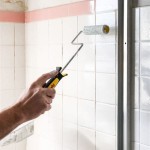Can Bathroom Light Fixtures Be Painted?
Bathroom light fixtures, often subjected to humidity and temperature fluctuations, can lose their luster over time. Painting offers a cost-effective way to refresh their appearance and complement updated bathroom décor. However, the process requires careful consideration of the fixture's material, the paint type, and proper surface preparation.
The feasibility of painting a bathroom light fixture depends largely on the material from which it is constructed. Metal fixtures, including brass, chrome, and nickel, are generally suitable candidates for painting. Plastic fixtures can also be painted, but require specific paint types designed for adhesion to plastic surfaces. Glass fixtures, while paintable, present a more complex challenge due to the smooth, non-porous nature of glass. Painting glass fixtures often yields less durable results compared to metal or plastic.
Choosing the correct paint type is crucial for a successful outcome. For metal fixtures, metal primers and paints formulated for interior or exterior use, depending on the fixture's location, are recommended. Rust-oleum and other brands offer specialized metal paints designed for durability and resistance to chipping. For plastic fixtures, using a primer specifically designed for plastic will improve paint adhesion. High-quality acrylic enamel paints are commonly used for both plastic and metal fixtures. When painting glass fixtures, specialized glass paints or epoxy-based paints are necessary for optimal adhesion.
Prior to painting, thorough surface preparation is essential. This involves cleaning the fixture to remove any dirt, grease, or grime that could interfere with paint adhesion. A mild detergent solution and a soft cloth or sponge are typically sufficient. For metal fixtures, light sanding with fine-grit sandpaper can create a slightly textured surface that promotes better paint adhesion. For heavily corroded metal fixtures, a wire brush may be necessary to remove rust before sanding. After cleaning and sanding, the fixture should be thoroughly rinsed and dried.
When painting metal fixtures, applying a metal primer before the topcoat is highly recommended. Primer enhances paint adhesion and provides a more uniform surface for the topcoat, resulting in a more professional finish. Allow the primer to dry completely according to the manufacturer's instructions before applying the topcoat. Multiple thin coats of paint are generally preferred over one thick coat, as thin coats dry more evenly and are less prone to drips or runs.
Painting plastic fixtures requires similar preparation. Cleaning the fixture with a mild detergent solution is essential. While sanding is generally not necessary for plastic, lightly roughening the surface with fine-grit sandpaper can improve paint adhesion, particularly for glossy plastic surfaces. Applying a primer specifically formulated for plastic before the topcoat is highly recommended. As with metal fixtures, multiple thin coats of paint are preferable to one thick coat.
Painting glass fixtures presents unique challenges. The smooth, non-porous surface of glass makes paint adhesion difficult. Thoroughly cleaning the glass with a glass cleaner is crucial. Using a specialized glass primer or etching primer can significantly improve paint adhesion. Epoxy-based paints are often recommended for glass fixtures due to their superior bonding properties. Multiple thin coats are essential, allowing each coat to dry completely before applying the next.
Proper ventilation is paramount when painting any fixture, particularly in a confined space like a bathroom. Open windows and doors to ensure adequate airflow and minimize exposure to paint fumes. Wearing a respirator or mask designed for paint fumes is also recommended. Protecting surrounding surfaces with drop cloths or painter's tape is essential to prevent accidental paint splatters.
Disassembling the light fixture before painting is often advantageous, as it allows for easier access to all parts of the fixture and ensures a more even paint application. However, if disassembly is not feasible, carefully masking off areas that should not be painted, such as light bulb sockets and wiring, is crucial. Using painter's tape specifically designed for delicate surfaces will help prevent damage to the fixture.
Allowing the paint to cure completely before reinstalling the fixture is critical for ensuring the paint's durability and preventing damage. The curing time varies depending on the paint type and environmental conditions. Refer to the paint manufacturer's instructions for the recommended curing time. Avoid touching or handling the painted fixture until it has fully cured.
While painting bathroom light fixtures can be a cost-effective way to update their appearance, it's important to consider the fixture's material and choose the appropriate paint and preparation methods. Careful surface preparation, proper ventilation, and patience are essential for achieving a professional-looking and long-lasting finish.

How To Spray Paint The Ugly Light Fixture In Your Bathroom

How To Spray Paint The Ugly Light Fixture In Your Bathroom

Repaint A Light Fixture With Colorshot Spray Paint

Bathroom Light Makeover With Paint Girl Just Diy

Easy Light Fixture Makeover With Spray Paint

Bathroom Light Fixture Makeover

How To Spray Paint The Ugly Light Fixture In Your Bathroom

Spray Painting A Light Fixture Turning It Home

Bathroom Light Makeover With Paint Girl Just Diy

The Easiest Way To Paint A Light Use Spray
Related Posts
